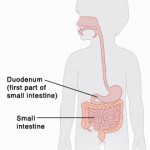Celiac Disease Symptoms
January 20, 2011 by staff
 Celiac Disease Symptoms, Aschauer curry is one of growing number of people with celiac disease – an autoimmune reaction in the gut to eat gluten.
Celiac Disease Symptoms, Aschauer curry is one of growing number of people with celiac disease – an autoimmune reaction in the gut to eat gluten.
This story introduces the basics of this particular disease, including its wide range of symptoms, detection, doctors, and suggests treatment.
Viewers will not only learn about the personal history of the Curry fight against severe gastrointestinal complications and depression. They will also hear a certified pathologist, who can speak to:
Who is affected by celiac disease?
What gluten is and how it exacerbates the symptoms
What to do if you experience symptoms
Description of the simple blood test that can confirm the diagnosis
How simple diet changes can help treat
While celiac disease is more frequent, pathologists agree that if you are tested early and can make appropriate adjustments to your diet, the negative effects of celiac disease may be offset as much earlier, or in case of Carl, be completely avoided. Since going gluten-free diet, intestinal mucosa Carl himself has repaired the effects of celiac disease.
Audiotape:
Board-certified pathologist
Celiac disease patient, Carl Aschauer
B-roll:
Celiac disease patient, Carl Aschauer, work
Celiac disease patient, Carl Aschauer snacks with friends
Gluten-free bakery
Video of a pathologist analyzes and tests in a laboratory
Celiac disease (CD) is an autoimmune disease caused by a permanent sensitivity to gluten in genetically susceptible individuals. An approach by NMR spectroscopic metabonomic the disease could allow early diagnosis and help.
Celiac disease is an immune system disorder that causes people genetically prone to have a permanent sensitivity to gluten composite. Gluten is the composite of prolamin and glutelin are brought into contact with starch in the endosperm of grains associated with various grasses, wheat, the most infamous, but also barley and rye. Gluten is found naturally mostly in foods made from these grains, but may also be present in drugs, vitamin supplements and even lip balm, according to the U.S. National Digestive Diseases Information Clearinghouse (NDDIC).
The immune response to gluten in people with celiac disease causes damage to the ileum, small intestine, where the tiny protrusions, the villi lining the intestine and provide a large absorption surface, reducing or atrophy. The intestinal inflammation seen in celiac disease may also simply lead to an increase in the number of white cells in the so-called silent celiac disease patients.
Understanding the characteristics of celiac disease metabonomics not only enable early diagnosis in atypical cases, but could also address the question remains open in this field of medicine, the team said. Namely, the metabolic alterations are associated with celiac disease due to malabsorption (ie, intestinal lesions) or are they independent of mucosal injury and therefore intrinsic to the pathology? The researchers hope to clarify whether metabonomics in this disease is on the lookout for symptoms or to identify the underlying cause beyond genetic susceptibility. The work could also help those without symptoms and without damaging the intestine, but which have potential celiac disease to be forced to adopt a gluten-free diet unnecessarily.
_________________________________________
Please feel free to send if you have any questions regarding this post , you can contact on
Disclaimer: The views expressed on this site are that of the authors and not necessarily that of U.S.S.POST.




Comments